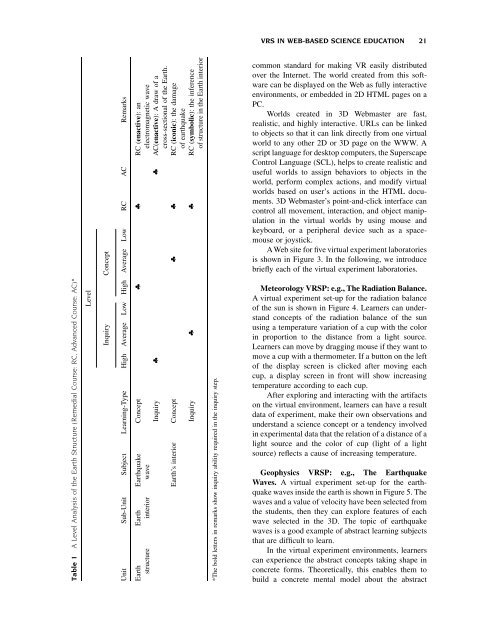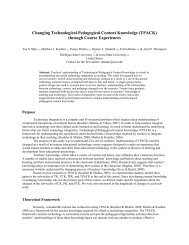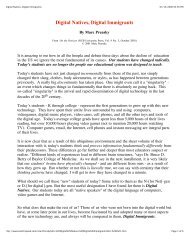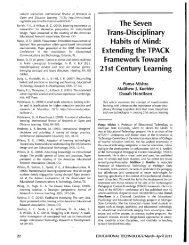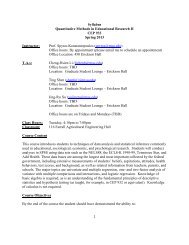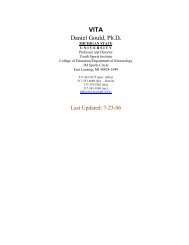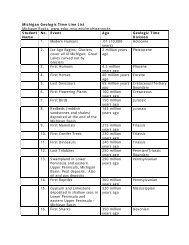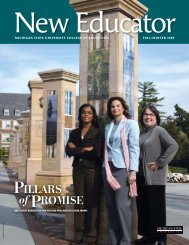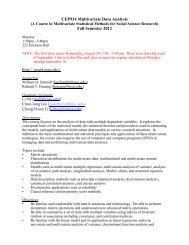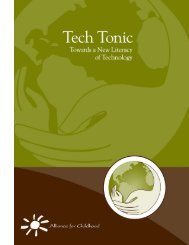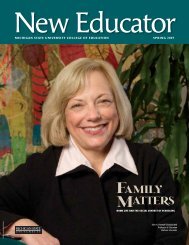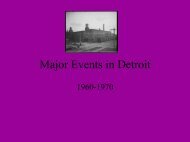Virtual Reality Simulations in Web-Based Science Education
Virtual Reality Simulations in Web-Based Science Education
Virtual Reality Simulations in Web-Based Science Education
You also want an ePaper? Increase the reach of your titles
YUMPU automatically turns print PDFs into web optimized ePapers that Google loves.
VRS IN WEB-BASED SCIENCE EDUCATION 21Table 1 A Level Analysis of the Earth Structure (Remedial Course: RC, Advanced Course: AC)*LevelInquiry ConceptUnit Sub-Unit Subject Learn<strong>in</strong>g-Type High Average Low High Average Low RC AC RemarksEarth Earth Earthquake Concept § § RC (enactive): anstructure <strong>in</strong>terior wave electromagnetic waveInquiry § § AC(enactive): A draw of across-sectional of the Earth.Earth’s <strong>in</strong>terior Concept § § RC (iconic): the damageof earthquakeInquiry § § RC (symbolic): the <strong>in</strong>ferenceof structure <strong>in</strong> the Earth <strong>in</strong>terior*The bold letters <strong>in</strong> remarks show <strong>in</strong>quiry ability required <strong>in</strong> the <strong>in</strong>quiry step.common standard for mak<strong>in</strong>g VR easily distributedover the Internet. The world created from this softwarecan be displayed on the <strong>Web</strong> as fully <strong>in</strong>teractiveenvironments, or embedded <strong>in</strong> 2D HTML pages on aPC.Worlds created <strong>in</strong> 3D <strong>Web</strong>master are fast,realistic, and highly <strong>in</strong>teractive. URLs can be l<strong>in</strong>kedto objects so that it can l<strong>in</strong>k directly from one virtualworld to any other 2D or 3D page on the WWW. Ascript language for desktop computers, the SuperscapeControl Language (SCL), helps to create realistic anduseful worlds to assign behaviors to objects <strong>in</strong> theworld, perform complex actions, and modify virtualworlds based on user’s actions <strong>in</strong> the HTML documents.3D <strong>Web</strong>master’s po<strong>in</strong>t-and-click <strong>in</strong>terface cancontrol all movement, <strong>in</strong>teraction, and object manipulation<strong>in</strong> the virtual worlds by us<strong>in</strong>g mouse andkeyboard, or a peripheral device such as a spacemouseor joystick.A<strong>Web</strong> site for five virtual experiment laboratoriesis shown <strong>in</strong> Figure 3. In the follow<strong>in</strong>g, we <strong>in</strong>troducebriefly each of the virtual experiment laboratories.Meteorology VRSP: e.g., The Radiation Balance.A virtual experiment set-up for the radiation balanceof the sun is shown <strong>in</strong> Figure 4. Learners can understandconcepts of the radiation balance of the sunus<strong>in</strong>g a temperature variation of a cup with the color<strong>in</strong> proportion to the distance from a light source.Learners can move by dragg<strong>in</strong>g mouse if they want tomove a cup with a thermometer. If a button on the leftof the display screen is clicked after mov<strong>in</strong>g eachcup, a display screen <strong>in</strong> front will show <strong>in</strong>creas<strong>in</strong>gtemperature accord<strong>in</strong>g to each cup.After explor<strong>in</strong>g and <strong>in</strong>teract<strong>in</strong>g with the artifactson the virtual environment, learners can have a resultdata of experiment, make their own observations andunderstand a science concept or a tendency <strong>in</strong>volved<strong>in</strong> experimental data that the relation of a distance of alight source and the color of cup (light of a lightsource) reflects a cause of <strong>in</strong>creas<strong>in</strong>g temperature.Geophysics VRSP: e.g., The EarthquakeWaves. A virtual experiment set-up for the earthquakewaves <strong>in</strong>side the earth is shown <strong>in</strong> Figure 5. Thewaves and a value of velocity have been selected fromthe students, then they can explore features of eachwave selected <strong>in</strong> the 3D. The topic of earthquakewaves is a good example of abstract learn<strong>in</strong>g subjectsthat are difficult to learn.In the virtual experiment environments, learnerscan experience the abstract concepts tak<strong>in</strong>g shape <strong>in</strong>concrete forms. Theoretically, this enables them tobuild a concrete mental model about the abstract


